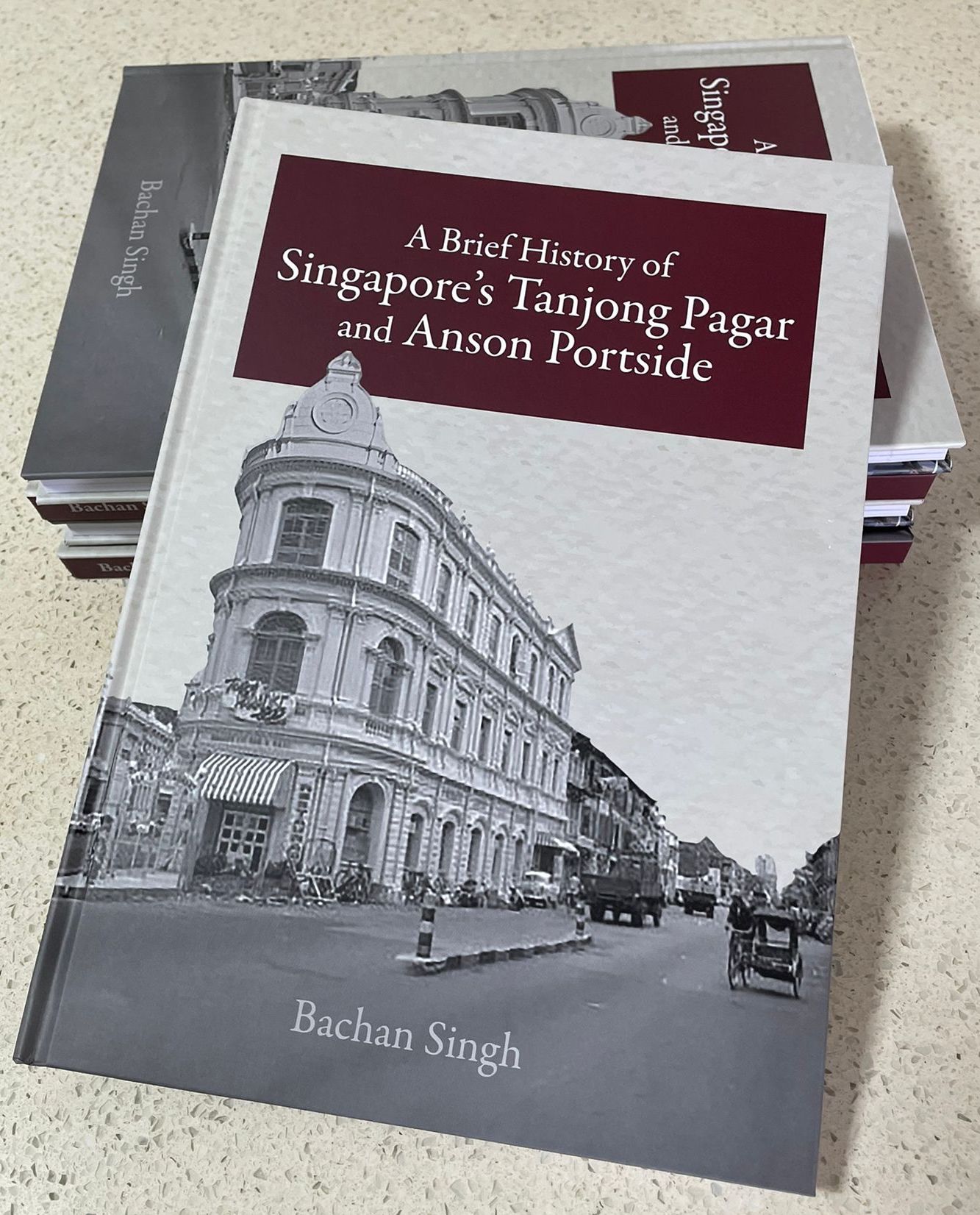There are Singaporeans who have lived in the country all their lives, but who do not know even its recent history.
They do not know where its world-famous port was originally located. They do not know that it was in Tanjong Pagar. They do not know that there was a monumental change in its operations — from conventional to container — from the 1970s and that it has since moved out of Tanjong Pagar.
That the whole port and portside are now empty and silent, as they were before the arrival of Thomas Stamford Raffles, who founded modern Singapore in 1819. And that the entire area is awaiting a change in use once again.
The book, A Brief History Of Singapore’s Tanjong Pagar And Anson Portside by journalist Bachan Singh, aims to record the history of this place before it is forgotten forever. The writer, who lived in the portside, points out that it is a brief history and that much more can be written about the area as it was very important in the history of modern Singapore.
Singh’s book has the curious story of the short-lived sailor’s bar at the original portside in Tanjong Pagar. And of the ship’s laundry nearby that held a spectacular firecracker event. And of a beach here, right at the edge of town. And much more.
The lack of knowledge about local history is not confined to ordinary people. It is a fact that aspects of the country’s recent history are also not known to top students attending interviews for scholarships.
The book records briefly the arrival of Raffles in Singapore in 1819, the subsequent reclamation of land (with earth from the levelling of the numerous hillocks along the coast) and construction of the port, the activities at the portside, and then the change of its use from conventional to container, the demolition of the entire portside for this and its ongoing move to Tuas.
It also highlights the political significance of the area, from the presence there of Lee Kuan Yew, David Marshall and J.B. Jeyaretnam. And the economic and social activity of the people of all races who lived, worked or did business there. There was even one woman with bound feet, also known as lotus feet, in the area.
As for the short-lived sailor’s bar, it was set up in a building that had provided accommodation for sailors for 60 years. This was the Boustead Institute building at the corner of Tanjong Pagar Road and Anson Road. The building opened in 1898 and was home away from home for tens of thousands of sailors until 1958. This is why many of them heard about it when a bar, Toby’s Paradise Bar, opened there in the same year.
It was set up by a former sailor, a Nigerian who had lived in Britain and later did business in Shanghai. He saw a business opportunity in the Singapore port and arrived in the then British colony with his Shanghai wife in 1958. They were renovating the upstairs premises into a “gorgeous nightclub” the following year when the bar had to close suddenly following action by the Minister for Home Affairs on the owner’s return from a business trip to Hong Kong.
The book details what happened after that and mentions that, despite attempts to get an answer for the minister’s action, it is not known why the Nigerian was banned from Singapore. Even after more than 60 years.
The book has the bigger picture of the transformation of the whole portside, which took place because the port began changing completely from the mid-1960s in preparation for the trend of shipping operations shifting from the conventional to the container mode.
As the container port expanded, all the buildings portside were levelled for its operations, except for one building which was fortunate to be tall enough to have a radar station to manage shipping traffic in the Tanjong Pagar port.
Later, the container operations began moving to the western part of the island. In the process, the entire area that was the original port and which was transformed for container operations has now become an empty and silent piece of land. Nothing is happening here until there is a change in use. Much like in the days before the arrival of Raffles in 1819.
One of the questions raised in the book is whether the whole area of the original port before it was transformed for container operations should have been conserved because of its significance in the history of modern Singapore. Entire streets of pre-war buildings would have been saved. And whether the sailor’s bar would have played an important part in the tourism appeal of this historic part of modern Singapore.
The book is available in a hardcover version. There will also be an e-book. Sales outlets and pricing to be announced. /TISG

